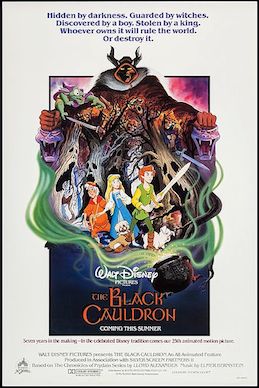
After over 20 years of post-Walt Disney hit-or-miss films, The Little Mermaid proved to be the critical turning point for Disney's entire history. It began the Disney Renaissance, the resurgence of animation talent and artistry that continued through the nineties, redefining Disney for the modern age and reestablishing it as a true cultural institution. As a film, it established many of the tropes that would define the Renaissance, and after decades of misfires like The Aristocats and Oliver and Company, it comes off as a revelation.
Undeniably both the most ambitious and beautiful Disney film since Sleeping Beauty, The Little Mermaid establishes the elegant, lifelike style of animation that would prove a hallmark of the Renaissance. The character designs and voice acting combine in a perfect marriage to produce a fantastically memorable cast; no one feels annoying or unnecessary. The true standout is Ursula, the best Disney villain since Cruella de Vil, who conveys a fantastic diva-esque menace before blossoming into grand scale, godlike evil for a climax that feels genuinely epic. The story, while still running with the Disney standbys of love at first sight, mutual love within a few days and getting married as a teenager, manages to still be compelling enough that its flaws can easily be ignored, and it carries a genuine sense of stakes and urgency, while having some fantastic moments of emotion.
And on the subject of emotion, it's helped along by one of the best soundtracks in Disney's canon (courtesy of the first collaboration between the powerhouse team of Alan Menkin and Howard Ashman, whose work would go on to define the Renaissance, and, for many people, Disney in general). Every song hits the mark; "Under the Sea" is irresistibly fun, "Poor Unfortunate Souls" is one of Disney's greatest villain songs, and "Part of Your World" is the establishing moment for both Ariel as a character and Menkin and Ashman as a team (and also just might be my favorite Disney song).
By the time it reaches its happy ending, The Little Mermaid feels like a massive payoff. It's the first film in decades to fully recapture the majesty, artistry, fun and excitement of Disney's best efforts; above all, it's a beautiful film. If a Renaissance is a rebirth, The Little Mermaid is just that, paving the way for quite possibly the greatest era of Disney's history.




